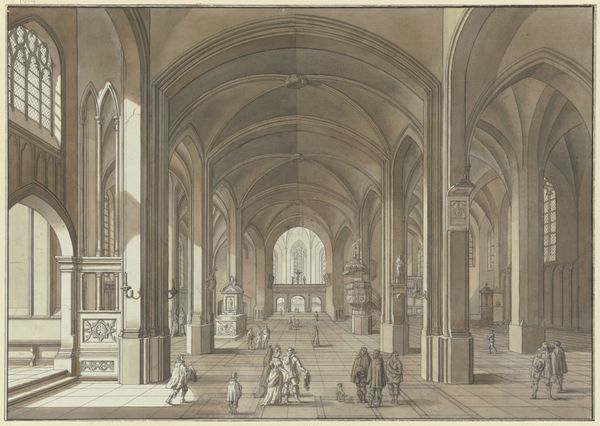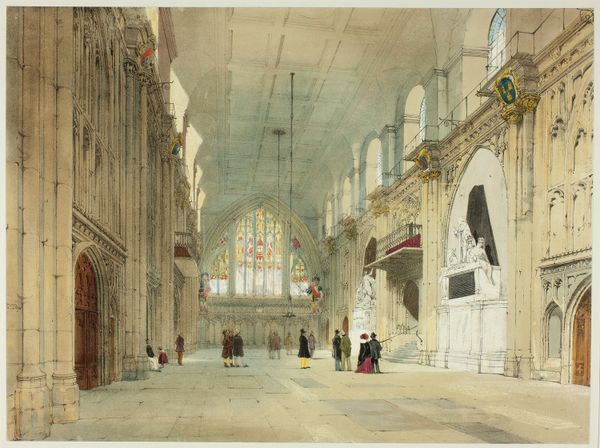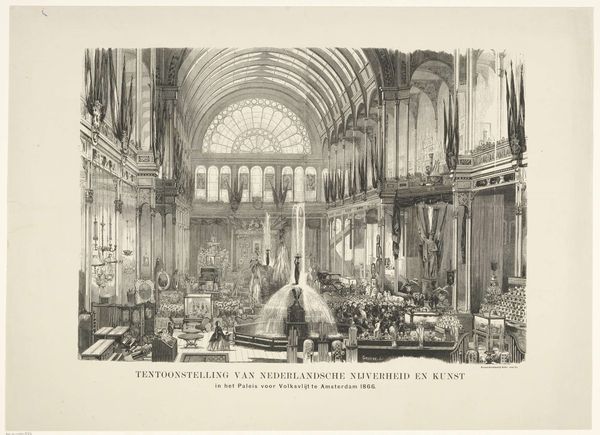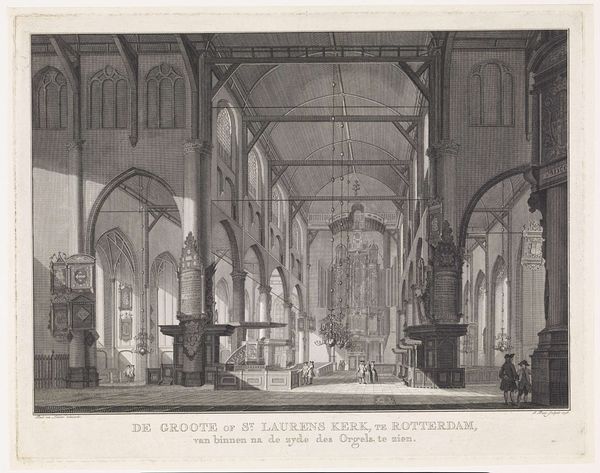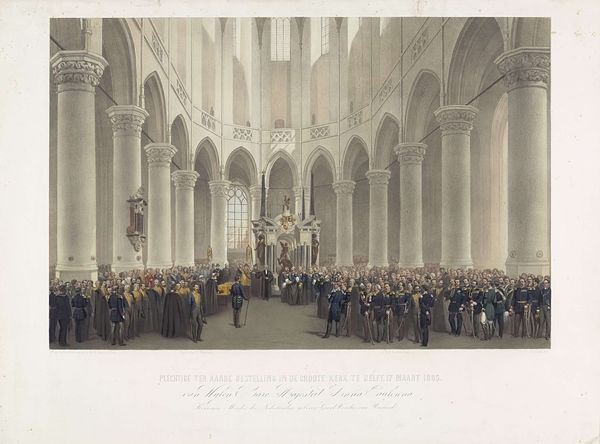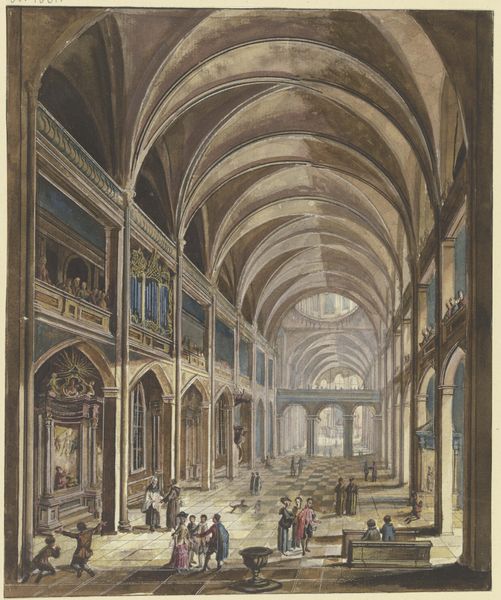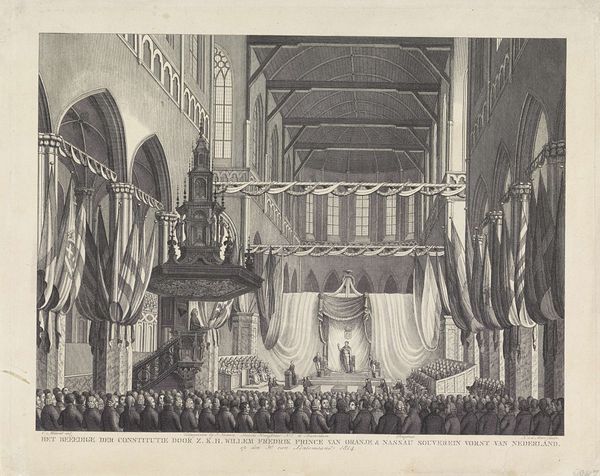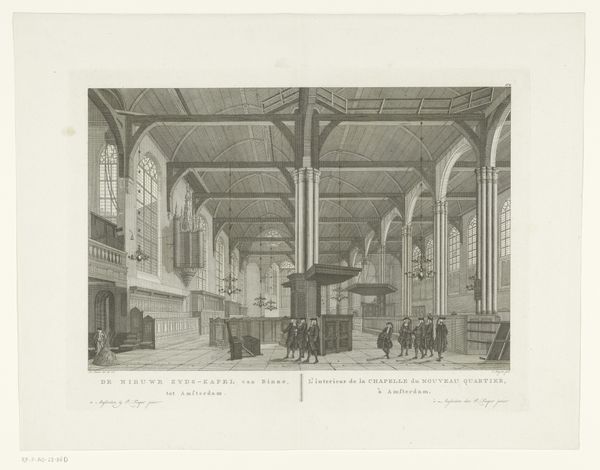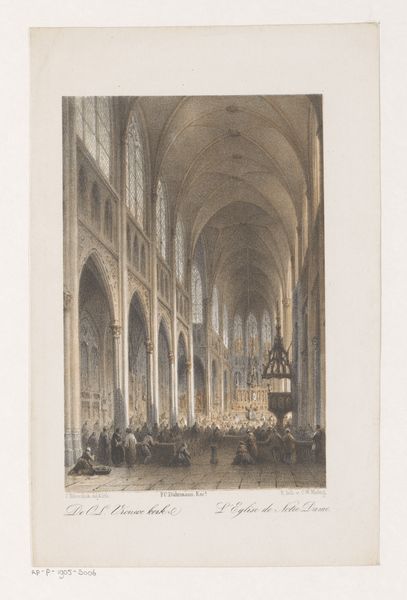
drawing, painting, print, gouache, paper, watercolor, graphite, architecture
#
drawing
#
painting
# print
#
gouache
#
paper
#
historic architecture
#
traditional architecture
#
watercolor
#
romanticism
#
graphite
#
watercolour illustration
#
genre-painting
#
history-painting
#
academic-art
#
architecture
Dimensions: 203 × 265 mm
Copyright: Public Domain
Curator: This watercolor and graphite work on paper, entitled "Interior of Christ Church" was completed around 1816 by Frederick MacKenzie. What strikes you most about it? Editor: Immediately, it’s the imposing scale. The artist renders this architecture with such precision, making the space feel both immense and somehow intimate, despite the soaring columns and vaulted ceiling. Curator: Yes, MacKenzie masterfully employs vertical lines, doesn't he? These columns create a sense of upward movement, guiding the viewer's eye through the architectural elements towards the light filtering in. Editor: And that light! Note how MacKenzie captures its ethereal quality as it bathes the interior. The subtle rendering emphasizes the sacredness of the space, while drawing attention to human rituals. Consider also that ornate organ centered above the apse – music being such a powerful component of faith. Curator: Precisely. Notice, too, how the light also defines the forms, creating highlights and shadows that articulate the texture of the stone and wood. Semiotically, this interplay can be read as a representation of spiritual illumination against earthly construction. Editor: Churches throughout history have long relied on familiar symbolic vocabularies. Light often represents the presence of the divine, architecture represents both God's house, and the heavenly abode. The people within partake of its shelter. Curator: Note the relatively muted palette. MacKenzie focuses on whites and earth tones and reserves small hints of deeper colors to accent architectural or symbolic highlights, thereby creating emphasis through restriction. Editor: Restriction in color, maybe, but the image offers a broad narrative sweep. It allows us to consider the place of community, faith, ritual, and the comfort offered by spiritual traditions through material expressions of shared heritage. Curator: It's intriguing how this essentially perspectival study transforms into an immersive experience, doesn’t it? Editor: Absolutely. I walked away pondering the resonance between symbolic imagery and architectural design on human experience, not to mention how faithfully those may have remained across time.
Comments
No comments
Be the first to comment and join the conversation on the ultimate creative platform.

